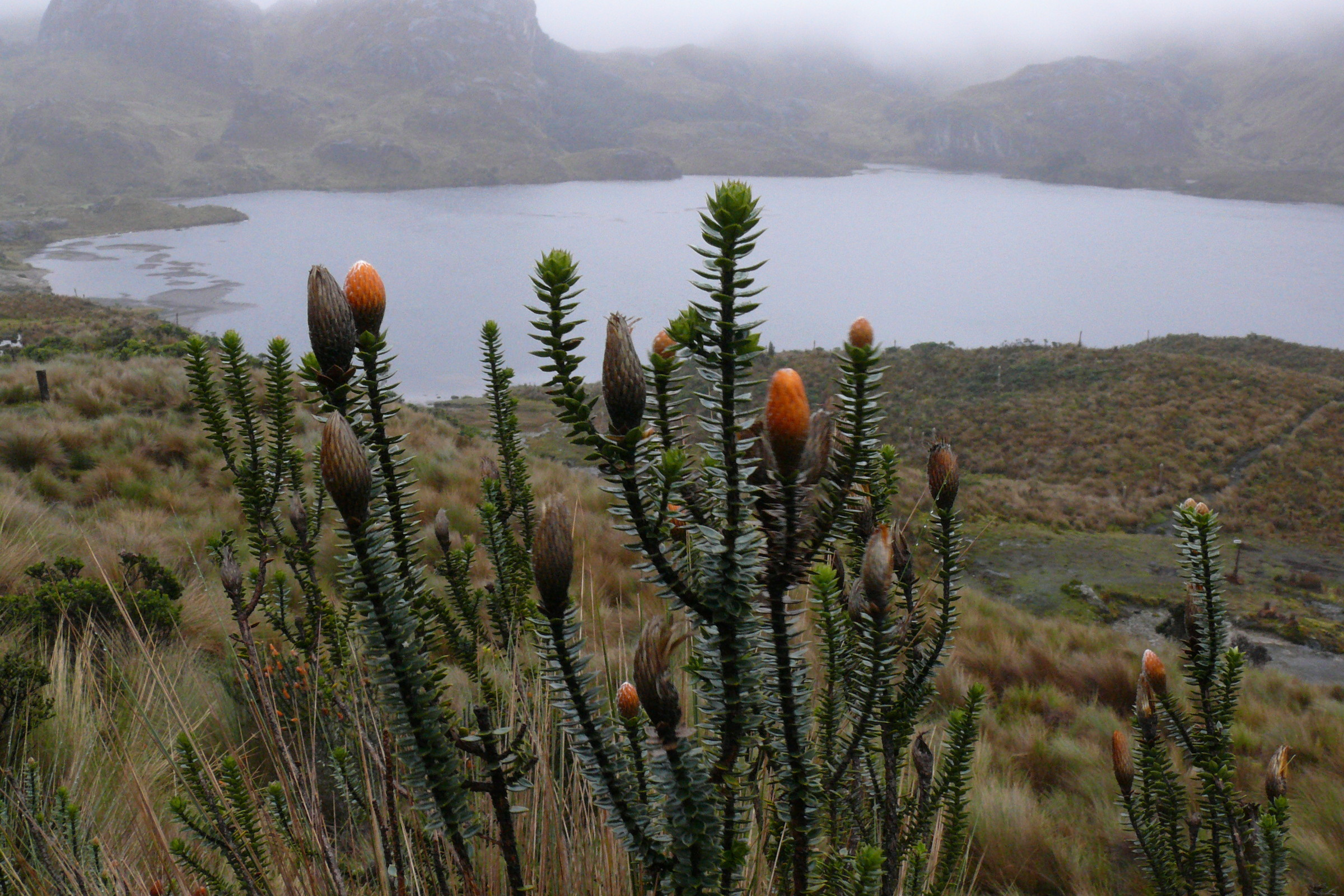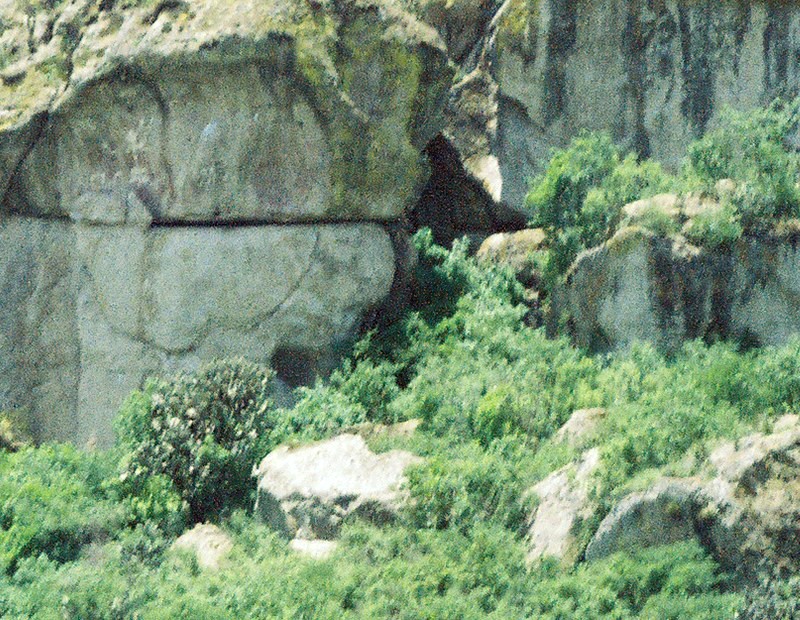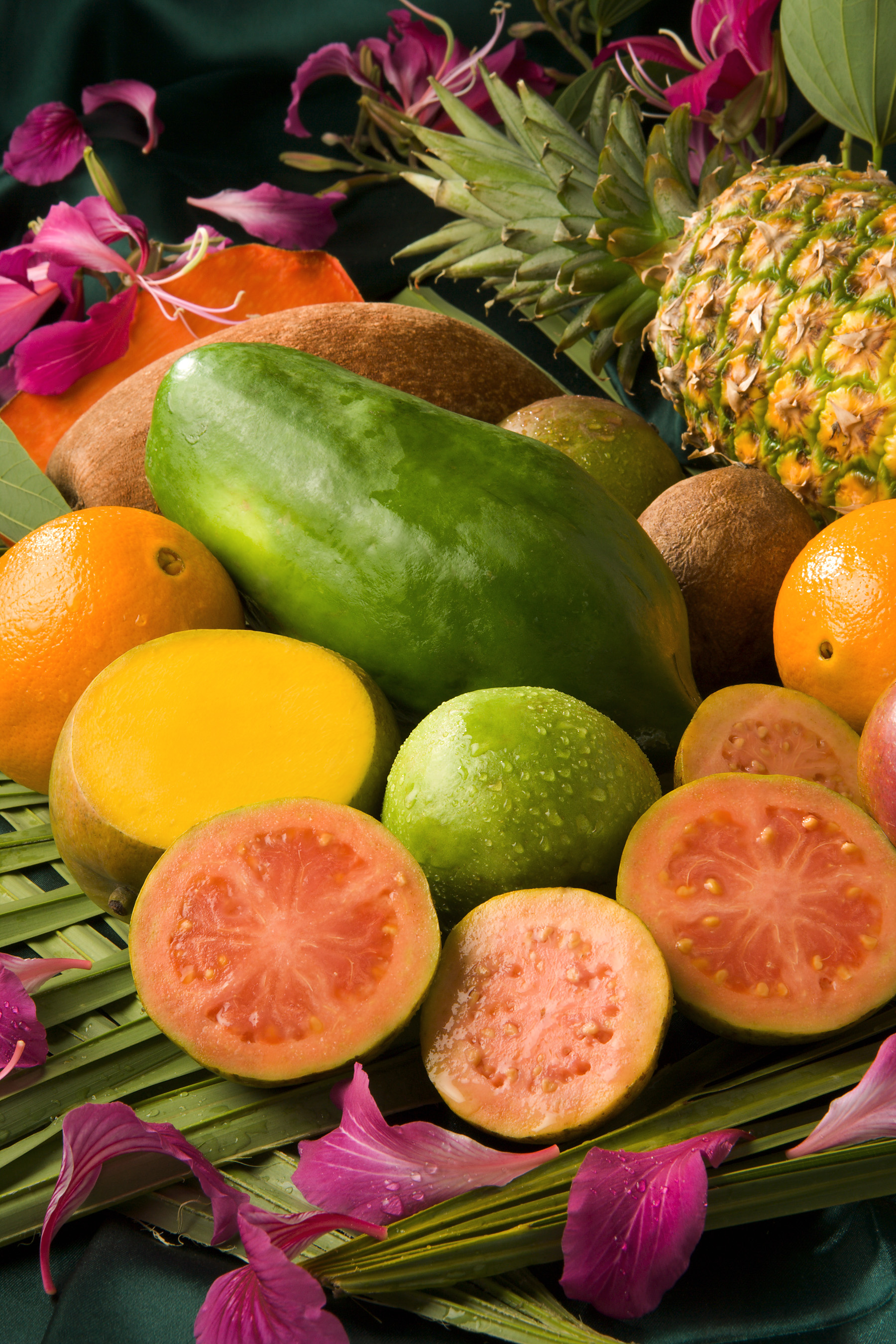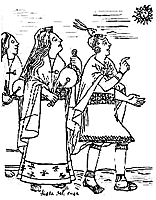|
Sayausi
Sayausi is a green oasis located in the South Area of Ecuador, close to the National Park of Cajas. Crops The traditional crops of Sayausi are maize, corn, potatoes and some tropical fruits. The area is so close to the Colonial city of Cuenca, Ecuador, Cuenca that some of crops are sold on the many markets of the city. Farmers travel these distances to offer to the public a variety of vegetables and fruits. Tourism In the 1990s this area was unknown, but new hotels and restaurants are opening and tourism has increased tremendously. Additionally, the strengthening tourism sector of neighboring Cuenca, Ecuador has increased tourism to Sayausí as well. More recently, a number of local initiatives have been started in order to expand Sayausí's agritourism sector. These initiatives primarily focus on sharing the gastronomy and culture of this rural part of Ecuador. Traditions Traditions include the preparing of the Incan chicha of Chicha de jora, Jora (a sour corn beverage) and ... [...More Info...] [...Related Items...] OR: [Wikipedia] [Google] [Baidu] |
Cuenca, Ecuador
Santa Ana de los Cuatro Ríos de Cuenca, commonly referred to as Cuenca (Kichwa: ''Tumipampa'') is the capital and largest city of the Azuay Province of Ecuador. Cuenca is located in the highlands of Ecuador at about above sea level, with an urban population of approximately 329,928 and 661,685 inhabitants in the larger metropolitan area. The center of the city is listed as a UNESCO World Heritage Site due to its many historical buildings and its historical importance as an agricultural and administrative center. History “The plateau is a place treasured by empires," comments Jeffrey Herlihy-Mera. "The Cañari then Inca and then Spanish occupied the region in the last two millennia, each renaming it in their own language. Now the capital city is called Cuenca and the province Azuay.” According to studies and archeological discoveries, the origins of the first inhabitants go back to the year 8060 BC in the Cave of Chopsi. They were hunters, hunting everything the Páramo ... [...More Info...] [...Related Items...] OR: [Wikipedia] [Google] [Baidu] |
Iglesia Parroquial De Sayausí
Iglesia may refer to: * Iglesia Department * Iglesia ni Cristo * Iglesia Filipina Independiente , native_name_lang = fil , icon = Logo of the Philippine Independent Church (Aglipayan Church).svg , icon_width = 80px , icon_alt = Coat of arms of the Philippine Independent Church , image ... * Iglesia (Metro Madrid), a station on Line 1 {{disambiguation ... [...More Info...] [...Related Items...] OR: [Wikipedia] [Google] [Baidu] |
Oasis
In ecology, an oasis (; ) is a fertile area of a desert or semi-desert environmentBattesti, Vincent (2005) Jardins au désert: Évolution des pratiques et savoirs oasiens: Jérid tunisien. Paris: IRD éditions. . that sustains plant life and provides habitat for animals. Surface water may be present, or water may only be accessible from wells or underground channels created by humans. In geography, an oasis may be a current or past rest stop on a transportation route, or less-than-verdant location that nonetheless provides access to underground water through deep wells created and maintained by humans. The word ''oasis'' came into English from la, oasis, from grc, ὄασις, , which in turn is a direct borrowing fro ... [...More Info...] [...Related Items...] OR: [Wikipedia] [Google] [Baidu] |
Ecuador
Ecuador ( ; ; Quechuan languages, Quechua: ''Ikwayur''; Shuar language, Shuar: ''Ecuador'' or ''Ekuatur''), officially the Republic of Ecuador ( es, República del Ecuador, which literally translates as "Republic of the Equator"; Quechuan languages, Quechua: ''Ikwadur Ripuwlika''; Shuar language, Shuar: ''Ekuatur Nunka''), is a country in northwestern South America, bordered by Colombia on the north, Peru on the east and south, and the Pacific Ocean on the west. Ecuador also includes the Galápagos Islands in the Pacific, about west of the mainland. The country's Capital city, capital and largest city is Quito. The territories of modern-day Ecuador were once home to a variety of Indigenous peoples in Ecuador, Indigenous groups that were gradually incorporated into the Inca Empire during the 15th century. The territory was Spanish colonization of the Americas, colonized by Spain during the 16th century, achieving independence in 1820 as part of Gran Colombia, from which it ... [...More Info...] [...Related Items...] OR: [Wikipedia] [Google] [Baidu] |
Cajas
El Cajas National Park or Cajas National Park ( es, Parque Nacional El Cajas) is a national park in the highlands of Ecuador. It is located about 30 km west from Cuenca, the capital of the province of Azuay. The area of 285.44 km2 (28,544 ha) between 3100m and 4450m above sea level is characterized by páramo vegetation on a jagged landscape of hills and valleys. It was declared a National Park on November 5, 1996 by resolution N° 057. Name The name "Cajas" is derived from the Quichua word "cassa" meaning "gateway to the snowy mountains"."Parque National Cajas", map and brochure from Etapa, Cuenca, 2009 or "caxa" (Quichua:cold). It has also been linked to the Spanish word "cajas" (boxes). Geography and climate The highest point is the 4,450 m high Cerro Arquitectos (Architects Hill), and the elevation of roads reaches higher than 4,310 meters (13,550 feet). About 270 lakes and lagoons are present in the páramo of Cajas. Luspa is the largest of these lake and extend ... [...More Info...] [...Related Items...] OR: [Wikipedia] [Google] [Baidu] |
Maize
Maize ( ; ''Zea mays'' subsp. ''mays'', from es, maíz after tnq, mahiz), also known as corn ( North American and Australian English), is a cereal grain first domesticated by indigenous peoples in southern Mexico about 10,000 years ago. The leafy stalk of the plant produces pollen inflorescences (or "tassels") and separate ovuliferous inflorescences called ears that when fertilized yield kernels or seeds, which are fruits. The term ''maize'' is preferred in formal, scientific, and international usage as a common name because it refers specifically to this one grain, unlike ''corn'', which has a complex variety of meanings that vary by context and geographic region. Maize has become a staple food in many parts of the world, with the total production of maize surpassing that of wheat or rice. In addition to being consumed directly by humans (often in the form of masa), maize is also used for corn ethanol, animal feed and other maize products, such as corn starch a ... [...More Info...] [...Related Items...] OR: [Wikipedia] [Google] [Baidu] |
Potatoes
The potato is a starchy food, a tuber of the plant ''Solanum tuberosum'' and is a root vegetable native to the Americas. The plant is a perennial in the nightshade family Solanaceae. Wild potato species can be found from the southern United States to southern Chile. The potato was originally believed to have been domesticated by Native Americans independently in multiple locations,University of Wisconsin-Madison, ''Finding rewrites the evolutionary history of the origin of potatoes'' (2005/ref> but later genetic studies traced a single origin, in the area of present-day southern Peru and extreme northwestern Bolivia. Potatoes were domesticated there approximately 7,000–10,000 years ago, from a species in the '' Solanum brevicaule'' complex. Lay summary: In the Andes region of South America, where the species is indigenous, some close relatives of the potato are cultivated. Potatoes were introduced to Europe from the Americas by the Spanish in the second half of the 16t ... [...More Info...] [...Related Items...] OR: [Wikipedia] [Google] [Baidu] |
Tropical Fruit
A tropical fruit one that typically grows in warm climates, or equatorial areas. Tropical fruits Varieties of tropical fruit include: *Acerola ( West Indian Cherry or Barbados Cherry) *Ackee *Banana * Barbadine (granadilla; maracujá-açu in Portuguese) *Brazil nut *Breadfruit * Canistel *Carambola (star fruit or five fingers) *Cashew * Chenet ( guinep or ackee; pitomba-das-Guinas in Portuguese) * Cherimoya * Caimito (caimite; related to the yellow abiu - egg fruit) *Cocoa *Coconut *Coffee * Cupuaçu *Custard apple *Durian *Genipap * Governor's plum * Guaraná *Guava * Hog plum (taperebá in Portuguese) *Jackfruit * Longan *Lychee *Macadamia * Mamey sapote (mammee apple; abricó in Portuguese) *Mamoncillo *Mango *Mangosteen * Marang *Papaya *Passion fruit *Persimmon *Pewa (peach nut; pupunha in Portuguese) * Pili nut *Pineapple * Plantain *Pois doux (ice-cream bean; inga-cipó in Portuguese) *Pomegranate *Pommerac (Otaheite apple; Malay apple; jambo in Portuguese) *Pom ... [...More Info...] [...Related Items...] OR: [Wikipedia] [Google] [Baidu] |
Agritourism
Agritourism or agrotourism involves any agriculturally based operation or activity that brings visitors to a farm or ranch. Types A 2018 article published in the ''Journal of Agriculture, Food Systems, and Community Development'' classified agritourism activities as falling into one or more categories: direct-to-consumer sales (e.g., farm stands, u-pick), agricultural education (e.g., school visits to a farm), hospitality (overnight farm stays), recreation (e.g., hunting, horseback riding), and entertainment (e.g., hayrides, harvest dinners). Most agritourists spent time visiting farm stands, picking fruit, or feeding animals; others may navigate a corn maze or do a farm stay, assisting with chores or agricultural or ranch work. Economic benefits Agricultural tourism has become a necessary means for many small farms’ survival. By diversifying business operations, farm operators are able to ensure a more stable income. This is because agritourism activities can occur d ... [...More Info...] [...Related Items...] OR: [Wikipedia] [Google] [Baidu] |
Inca
The Inca Empire (also known as the Incan Empire and the Inka Empire), called ''Tawantinsuyu'' by its subjects, ( Quechua for the "Realm of the Four Parts", "four parts together" ) was the largest empire in pre-Columbian America. The administrative, political and military center of the empire was in the city of Cusco. The Inca civilization arose from the Peruvian highlands sometime in the early 13th century. The Spanish began the conquest of the Inca Empire in 1532 and by 1572, the last Inca state was fully conquered. From 1438 to 1533, the Incas incorporated a large portion of western South America, centered on the Andean Mountains, using conquest and peaceful assimilation, among other methods. At its largest, the empire joined modern-day Peru, what are now western Ecuador, western and south central Bolivia, northwest Argentina, the southwesternmost tip of Colombia and a large portion of modern-day Chile, and into a state comparable to the historical empires of Eura ... [...More Info...] [...Related Items...] OR: [Wikipedia] [Google] [Baidu] |
Chicha De Jora
Chicha de jora is a corn beer or chicha prepared by germinating maize, extracting the malt sugars, boiling the wort, and fermenting it in large vessels (traditionally huge earthenware Earthenware is glazed or unglazed nonvitreous pottery that has normally been fired below . Basic earthenware, often called terracotta, absorbs liquids such as water. However, earthenware can be made impervious to liquids by coating it with a ce ... vats) for several days. The process is essentially similar to the process for the production of European-style beer. Some add quinoa or other adjuncts to give it consistency before it is boiled down. Chancaca, a hard raw form of cane sugar (not refined), helps with the fermentation process. It is traditionally prepared from a specific kind of yellow maize (''jora'') and is usually referred to as ''chicha de jora''. It has a pale straw color, a slightly milky appearance, and a slightly sour aftertaste, reminiscent of hard apple cider. It is drunk eithe ... [...More Info...] [...Related Items...] OR: [Wikipedia] [Google] [Baidu] |
Guinea Pig
The guinea pig or domestic guinea pig (''Cavia porcellus''), also known as the cavy or domestic cavy (), is a species of rodent belonging to the genus '' Cavia'' in the family Caviidae. Breeders tend to use the word ''cavy'' to describe the animal, while in scientific and laboratory contexts, it is far more commonly referred to by the common name ''guinea pig''. Despite their common name, guinea pigs are not native to Guinea, nor are they closely related biologically to pigs, and the origin of the name is still unclear. They originated in the Andes of South America. Studies based on biochemistry and hybridization suggest they are domesticated animals that do not exist naturally in the wild, descendants of a closely related cavy species such as '' C. tschudii''. They were originally domesticated as livestock for a source of meat, and are still consumed in some parts of the world. In Western society, the guinea pig has enjoyed widespread popularity as a pet since its i ... [...More Info...] [...Related Items...] OR: [Wikipedia] [Google] [Baidu] |
.jpg)
.jpg)




_06.jpg)

